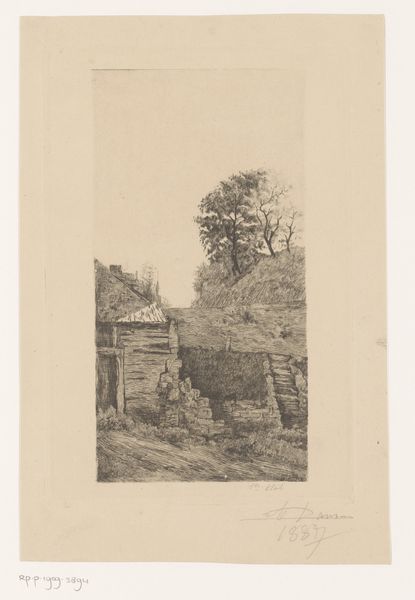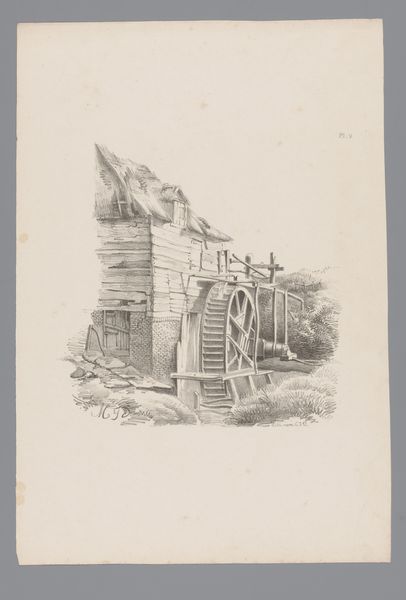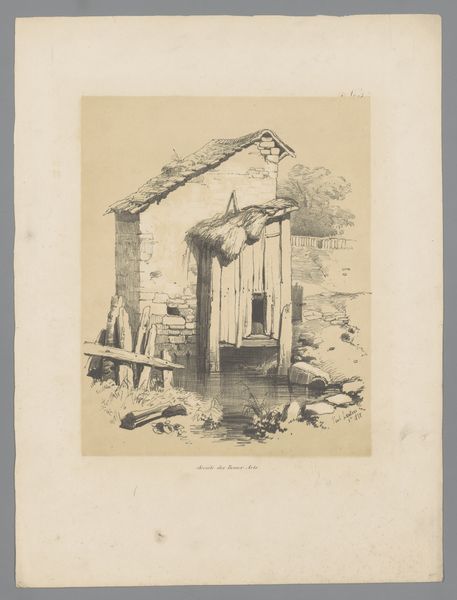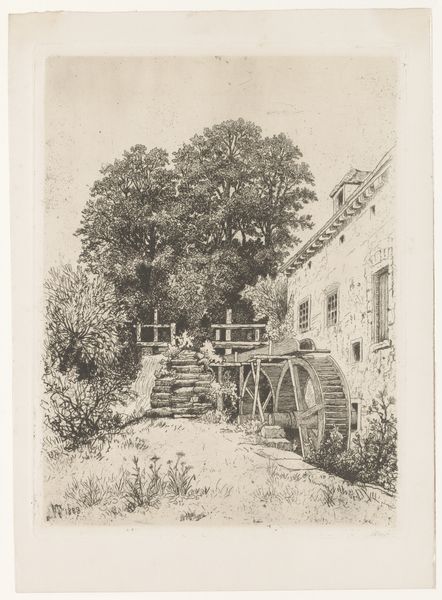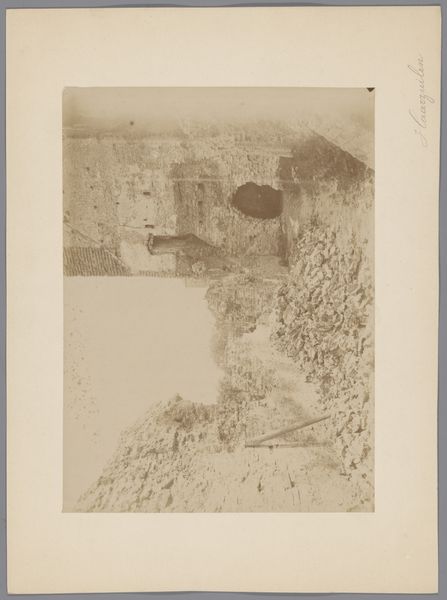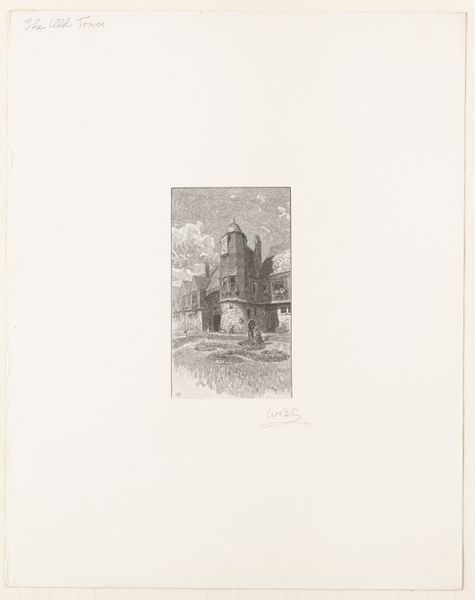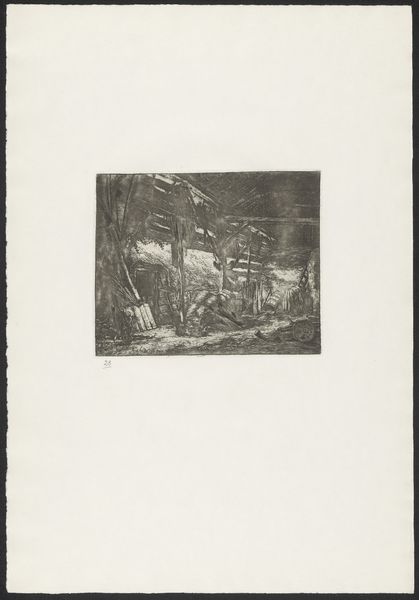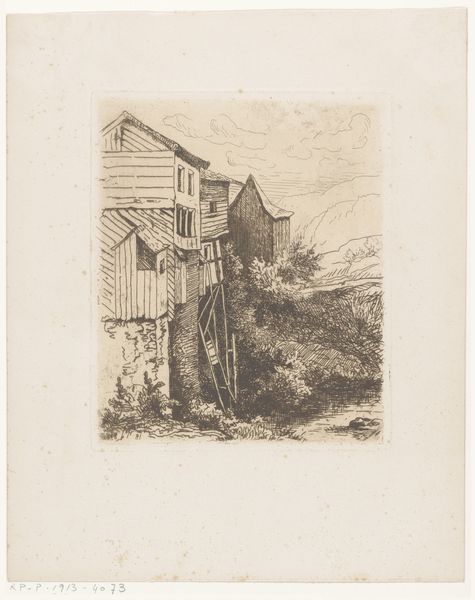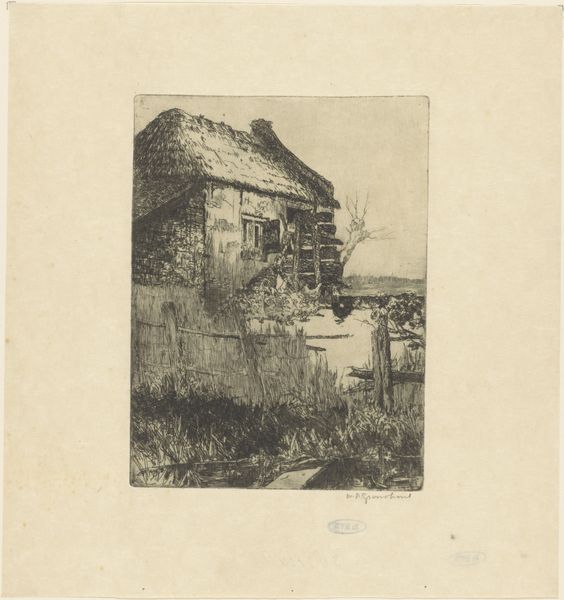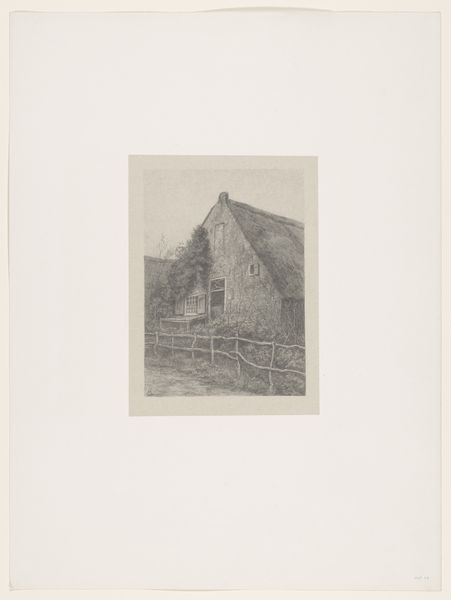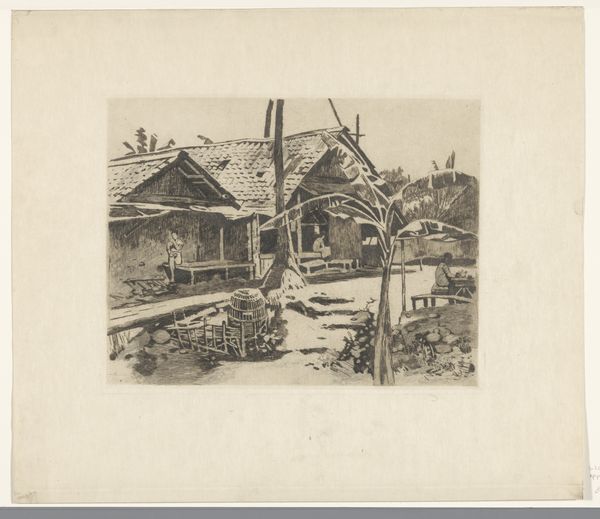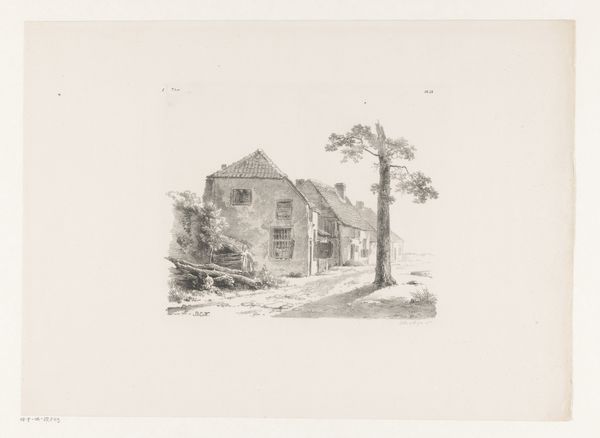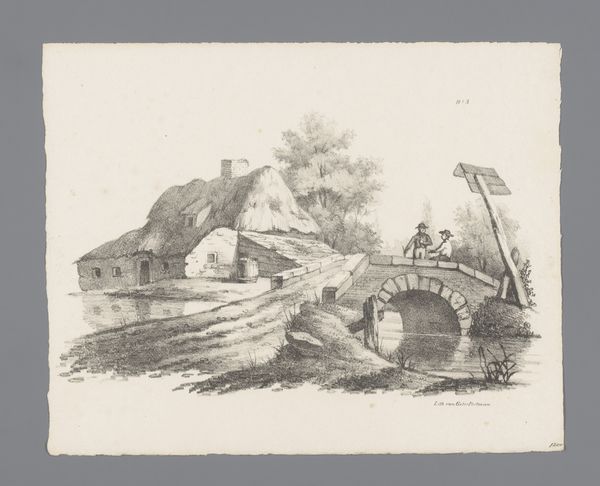
drawing, pencil
#
drawing
#
landscape
#
romanticism
#
pencil
Dimensions: height 470 mm, width 305 mm
Copyright: Rijks Museum: Open Domain
Curator: "Watermolen" by Barend Cornelis Koekkoek, made sometime between 1829 and 1844 using pencil on paper. It has a certain stillness about it, despite depicting something dynamic like a watermill. How do you interpret the artist’s choice of subject matter? Editor: The detail is pretty incredible. I guess, given that it's Romanticism, I'm thinking about nature and the sublime. But what grabs your attention when you look at it? Curator: Well, I immediately think about the process involved in its making, and the social context surrounding the industrialization of labour at the time. The artist is focusing on traditional labour. We need to consider the availability of materials. Where did the pencil and paper come from? How did Koekkoek use these to portray an object dependent upon natural power? Editor: So, you're not necessarily seeing it as a celebration of nature's beauty, but almost as a document of changing work practices? Curator: Precisely. How is this watermill rendered, and what does its rendering tell us? This highly detailed pencil drawing becomes an artifact *of* labor itself, almost in direct conversation *with* the mill's purpose. We are far from untouched nature here; a great deal of effort and design is evident. Do you agree? Editor: I think I do, especially seeing how meticulously the artist uses line to create texture, to show the decay of the building. Curator: Exactly! Think about the consumption and trade involved in sustaining both the mill's operations *and* Koekkoek’s artistic practice. The very act of creation embeds the piece within complex socioeconomic structures. It really changes our perception, doesn’t it? Editor: It definitely does. I see the drawing, but now I also see the network behind it.
Comments
No comments
Be the first to comment and join the conversation on the ultimate creative platform.
